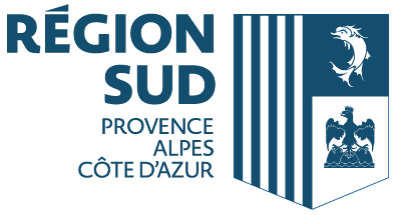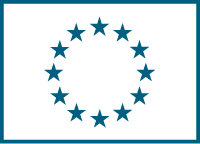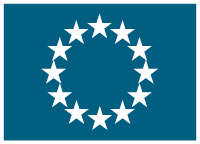Conservation of Cory's shearwater on the Hyères islands
(HYERILES)
Date du début: 1 sept. 2003,
Date de fin: 1 sept. 2007
PROJET
TERMINÉ
Background
The Hyères archipelago, which is located a few kilometres from the Mediterranean coast in the south of France, is made up of 3 large islands (Levant, Port-Cros and Porquerolles) and 6 small islets. These islands, which extend over 3000 ha, are covered with dense forests and scrub. Coastal cliffs favorise the presence of Mediterranean seabirds such as the Cory's shearwater ( Calonectris diomedea diomedea ), the Mediterranean Shearwater ( Puffinus yelkouan ) and the storm petrel ( Hydrobates pelagicus melitensis ). These birds belong to the Procellariidae family, grouping pelagic and noctural species. They nest in burrows which are only visited at night to avoid predation by large gulls.
In the past, these species, with which the shag (i> Phalacrocorax aristotelis desmarestii ) can be associated, did not benefit from the same conservation measures and monitoring that were afforded to other species of Mediterranean seabirds. Although, the Cory's shearwater is included in Annex 1 of the Bird's Directive, both are listed as "least concern" by the IUCN.
In recent years, the insular ecosystems of the Hyères archipelago, has suffered from several factors: increase in tourism, pollution (hydrocarbons, light and sound) and an overabundant population of nesting yellow-legged gull ( Larus cachinans ). These plentiful colonies of gulls have generated ecological imbalances on the islands. They scavenge open-air dumps on the mainland to feed their chicks and consequently bring a huge amount of organic matter to the islands. This has lead to an increase in the availability of food sources for introduced predators such as rats and cats. In recent years, the populations of these predators have increased rapidly.
Objectives
The main aim of the project was to stop the decline and to ensure the long-term conservation of the Cory's shearwater ( Calonectris diomedea diomedea )and Yelkouan Shearwater ( Puffinus yelkouan ) on the Hyères archipelago. Before the project, the populations were estimated to be: 195-245 couples (Cory's) and 230-300 couples (Mediterranean).
The following actions were planned:
·Predator control by trapping (rats and cats) and removal of the yellow legged gull ( Larus cachinans ) nests located inside the shearwaters colonies.
·Restore and increase the carrying capacity of breeding sites by the creation of artificial burrows, the consolidation of deteriorated sites and the installation of acoustic devices.
·Develop educational and communication tools to increase awareness among the general public, school children and professionals, of the existence and the fragility of shearwaters.
·Launch a study programme to improve scientific knowledge about the ecology and biology of this poorly known species. This study programme was to include an up-to-date review of currently available data, an analysis of the sensitivity of the populations to different factors of mortality, a ringing programme to understand the exchange patterns between different colonies.
·Exchange of knowledge and know-how amongst managers and scientists involved in the study of Mediterranean marine bird populations and in particular, those in charge of similar LIFE projects on Marseille islands and Balearic islands.
Results
The project gave good results and a greatly improved knowledge of the colonies of Procellariidae on the Hyères islands. The first indications are that the various actions (in particular the capture of feral cats) were successful in not just stopping the decline but also increasing the colonies of shearwater on these islands: at the close of the project, the populations were estimated to be: Yelkouan shearwater 1 112-1 576 couples, Cory's shearwater 226-306 couples.
Significant results of the project include:
- Improved knowledge of the Hyères island seabirds: a monitoring protocol; information on the reproductive biology and the ecology of the species, such as the importance of the choice of habitat (cavity and environment) and the sex recognition by song ( Yelkouan shearwater ); numerous articles and publications; ringing of 260 Yelkouan shearwater and 95 Cory's shearwater; discovery of new nesting sites and a much more exact idea of the number of shearwaters present (significantly higher than that thought before the project); discovery of one nesting couple of the Mediterranean shag and contacts with the Storm Petrel (not seen on these islands since the 19th century).
- Improved knowledge and management of predators introduced on the Hyères islands: the study of the diet of the feral cat showed a high rate of predation on the Yelkouan shearwater, priority was given to the capture and export of 29 cats, and integrated control measures were put in place; studies on the black rat showed that this species does not prey heavily on procellariidae (282 rats were captured).
- 36 artificial burrows were put in place and both species of shearwater responded positively: traces of frequentation increased every year.
- Limiting public access to the reproduction sites and controlling access to the islands.
- Increasing public awareness: publication of newsletter "Aucelun dè mar"
(âmarine birdsâ in the language of Provence) in cooperation with the LIFE project " Conservation of marine bird populations in the Marseille islands - LIFE03/NAT/F/000102"; a well organised, esthetic and informative website; 10 TV reports filmed for regional and national television programmes etc.
- Environmental education: creation of an educational kit on Mediterranean marine birds, presentation of an exhibition (88 000 visitors), presentations in 24 schools (more than 2 500 students), participation in 5 national and international events.
- Publication of a technical manual "Cahier technique pour la conservation des oiseaux marins des îles dâHyères" An atlas of breeding sites was also produced.
- A doctorate thesis was completed during the project and 3 others were started with Procellariidae and their predators as the main subject.
- An After-LIFE conservation plan was elaborated, with 3 main objectives: 1) Integration and continuation of LIFE actions in the Natura 2000 âobjectives documentâ (document dâobjectifs â DOCOB) for the Parc National de Port-Clos. 2) Elaboration of a national conservation plan for the Yelkouan Shearwater and changing its IUCN status from "Least Concern" to "Near Threatened". 3) Further designation of coastal and marine Natura 2000 sites in France.
Disclaimer : This « results » section should be considered as a draft until the Commission has completed its evaluation .




